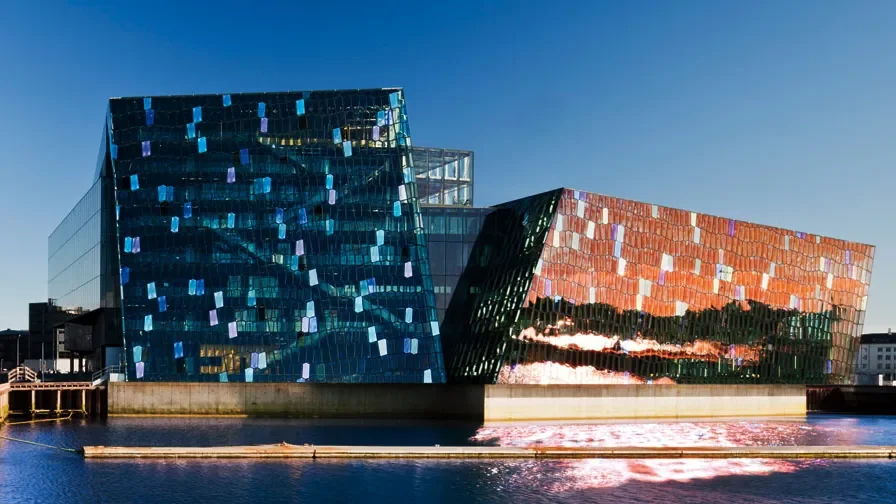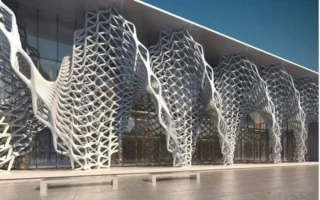Introduction:
In the bustling urban landscapes and suburban developments, commercial architecture stands as a testament to human enterprise and creativity. From towering skyscrapers to quaint storefronts, commercial architecture shapes the built environment in which we live, work, and play. But what exactly is commercial architecture, and how does it differ from other branches of the discipline? Let’s embark on a journey to unravel the intricacies of commercial architecture and its significance in shaping the modern world.
1.Defining the Terrain:
Deciphering Commercial Architecture: Understanding the Concept
Commercial architecture encompasses the design and construction of buildings and structures that serve commercial purposes. These include a wide range of facilities, such as office buildings, retail stores, restaurants, hotels, and entertainment venues. Unlike residential architecture, which focuses on creating spaces for living, commercial architecture revolves around meeting the needs of businesses, organizations, and institutions. It’s about balancing functionality, aesthetics, and economic viability to create environments that support commerce, innovation, and human interaction.
2.The Built Environment of Business: Exploring Commercial Spaces
Commercial architecture spans a diverse array of typologies, each tailored to the specific requirements and aspirations of its occupants. Office buildings, for instance, are designed to accommodate a dynamic workforce, providing flexible workspaces, collaborative areas, and amenities that foster productivity and creativity. Retail stores, on the other hand, are crafted to entice customers, with strategic layouts, eye-catching displays, and immersive experiences that drive sales and brand engagement. From hotels and restaurants to shopping malls and cultural institutions, commercial architecture shapes the way we engage with the world of commerce, leisure, and culture.
3.Form Follows Function: The Principles of Commercial Design
At the heart of commercial architecture lies the principle of form follows function, a mantra coined by renowned architect Louis Sullivan. In commercial design, every element is meticulously planned and executed to serve a specific purpose, whether it’s maximizing floor space, optimizing traffic flow, or enhancing brand identity. Functionality is paramount, but it’s not the sole consideration; aesthetics, branding, and user experience also play crucial roles in shaping the design of commercial spaces. It’s a delicate balance between practicality and allure, where every design decision reflects the values and objectives of the client.
4.Beyond Brick and Mortar: The Role of Technology in Commercial Architecture
In the digital age, technology has become an integral part of commercial architecture, revolutionizing the way buildings are designed, constructed, and operated. Building Information Modeling (BIM), for instance, enables architects and designers to create detailed digital models that simulate every aspect of a building’s lifecycle, from initial concept to occupancy. Virtual reality (VR) and augmented reality (AR) technologies allow clients and stakeholders to visualize and interact with proposed designs in immersive digital environments. Sustainable building technologies, such as green roofs, solar panels, and energy-efficient HVAC systems, are also reshaping the landscape of commercial architecture, driving a shift towards more environmentally friendly and resource-efficient buildings.
5.The Power of Place: Contextual Considerations in Commercial Architecture
Commercial architecture is deeply influenced by its context, encompassing factors such as site conditions, urban fabric, cultural heritage, and regulatory requirements. Architects must navigate a complex web of constraints and opportunities, balancing the demands of the client with the needs of the community and the environment. Contextual considerations shape not only the physical form of a building but also its cultural significance and social impact. Whether it’s preserving historic landmarks, revitalizing urban neighborhoods, or fostering sustainable development, commercial architecture plays a vital role in shaping the fabric of our cities and communities.
6.Designing for Diversity: The Evolution of Commercial Architecture
As society evolves, so too does commercial architecture, reflecting changing demographics, lifestyles, and consumer preferences. The rise of e-commerce, for instance, has prompted a rethinking of traditional retail spaces, with a greater emphasis on experiential retail concepts and omnichannel strategies. The growing demand for flexible work arrangements has led to the rise of coworking spaces, shared offices, and remote work hubs, challenging traditional notions of workplace design. Cultural shifts towards sustainability and wellness have also influenced commercial architecture, driving a demand for buildings that prioritize environmental stewardship, health, and well-being.
7.The Intersection of Art and Commerce: Architectural Branding and Identity
In the competitive world of commerce, branding plays a pivotal role in shaping consumer perceptions and driving business success. Commercial architecture serves as a powerful tool for expressing and reinforcing brand identity, with buildings and spaces serving as physical manifestations of corporate values, culture, and ethos. From iconic landmarks to flagship stores, architectural branding creates memorable experiences that resonate with customers, fostering brand loyalty and differentiation in a crowded marketplace. Whether it’s Apple’s sleek, minimalist retail stores or the playful, interactive spaces of Google’s campus, commercial architecture serves as a canvas for storytelling, innovation, and brand expression.
Conclusion:
Shaping the Future: The Legacy of Commercial Architecture As we navigate the complexities of the modern world, the role of commercial architecture becomes ever more vital. It’s not just about creating buildings; it’s about crafting experiences, fostering connections, and shaping the way we live, work, and interact with the world around us. Commercial architecture serves as a catalyst for economic growth, innovation, and social change, driving the evolution of our cities and communities. In this ongoing quest for excellence, architects, designers, and developers have the power to shape a future where commerce and creativity converge, creating environments that inspire, delight, and endure.




